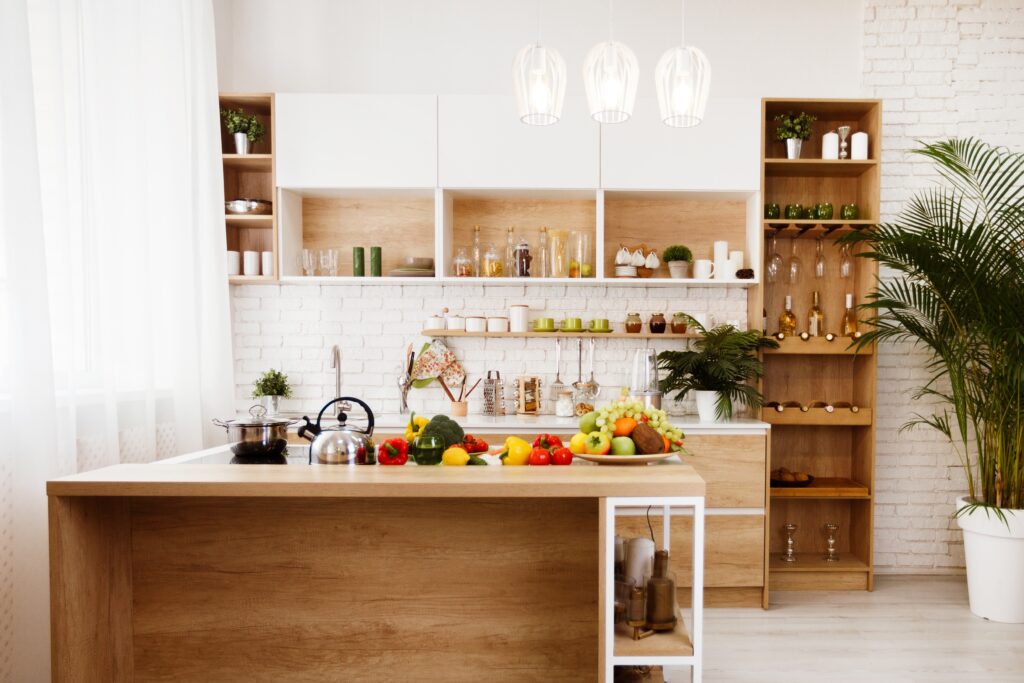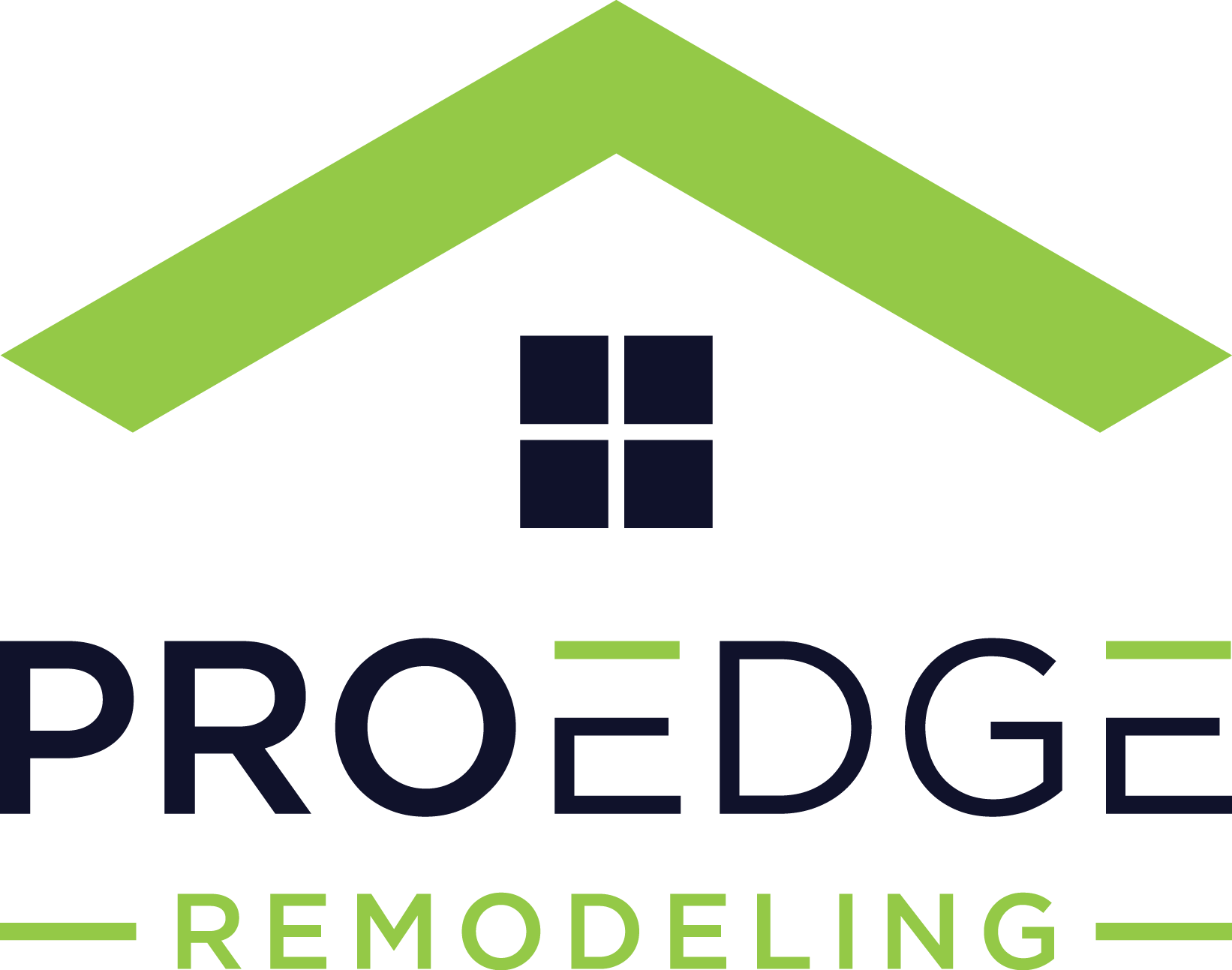Guide to a Kitchen Cabinet Makeover

Thinking about giving your kitchen a fresh new look without gutting the whole space? A cabinet makeover might be just what you need. It’s one of the easiest and most cost-effective ways to breathe new life into your kitchen.
Whether you’re tired of outdated finishes or just want something that better suits your style, updating your cabinets can upgrade the look and feel of your space. Plus, it can improve how your kitchen functions and ultimately boost your home’s value.
Table of Contents
- Signs Your Kitchen Cabinets Need a Makeover
- Cabinet Makeover vs. Cabinet Replacement
- Popular Kitchen Cabinet Makeover Options
- Tools and Materials You’ll Need
- Step-by-Step: How to Paint Your Kitchen Cabinets
- Budgeting Your Cabinet Makeover
- Kitchen Cabinet Makeover Ideas by Style
- Maintenance Tips for Your Updated Cabinets
Signs Your Kitchen Cabinets Need a Makeover
Here are a few signs your cabinets are due for an update:
Worn or chipped finishes
If your cabinet doors are looking scuffed, scratched, or just plain tired, that’s a pretty clear sign they’ve seen better days. Peeling paint, faded stain, or visible wear around handles all point to a cabinet makeover being well overdue.
Outdated styles or colors
Styles change, and your kitchen might be stuck in a time warp. Whether it’s a dated door design or a color that no longer fits your vibe, updating your cabinets can instantly modernize the entire space.
Poor functionality
Do you have cabinet doors that won’t close all the way, drawers that stick, or knobs that are about to fall off? A makeover can include fresh hardware, soft-close hinges, and fixes that make your kitchen easier to use every day.
Mismatched with updated appliances or counters
If you’ve recently upgraded your appliances or added new countertops, but your cabinets still look like they belong in another decade, the contrast can be jarring. Updating your cabinets can help tie the whole room together and give it a more cohesive, finished look.
Cabinet Makeover vs. Cabinet Replacement
So, you know your kitchen cabinets need some love—but should you give them a makeover or rip them out and start fresh? Great question. Both options have their place, but knowing the differences can help you decide what makes the most sense for your space.
Cost comparison
Completely replacing your cabinets can get expensive fast. We’re talking anywhere from $8,000 to $20,000 or more depending on your kitchen size, cabinet materials, and layout changes. A makeover, on the other hand, can cost a fraction of that. Painting, refacing, or updating hardware might run you anywhere from a few hundred to a few thousand dollars, making it a budget-friendly way to get a whole new look without blowing your renovation fund.
Time and labor differences
Replacing cabinets isn’t just pricey—it’s time-consuming and messy. You’ll likely need to demo the old ones, possibly redo electrical or plumbing, and wait weeks (sometimes months) for new cabinetry to arrive and get installed.
With a makeover, most painting or refacing jobs can be done in a few days to a week, depending on how hands-on you want to be. Plus, you still get to use your kitchen while the work’s being done.
When replacement makes more sense
That said, there are times when starting from scratch is the smarter move. If your cabinets are structurally damaged, warped from moisture, or made from cheap particleboard that’s falling apart, a makeover might not cut it. Same goes if you’re planning a full kitchen remodel with a new layout. In those cases, it’s worth investing in brand-new cabinets to make sure everything is solid, functional, and tailored to your needs.
Ultimately, if your cabinets are in good shape but just need a refresh, a makeover is an easy, affordable way to transform your kitchen. But if they’re falling apart or you want a whole new setup, replacement might be the better route.
Popular Kitchen Cabinet Makeover Options
When it comes to giving your kitchen a refresh, you don’t have to start from scratch. There are plenty of ways to makeover your cabinets and completely change the look and feel of your space—without gutting the whole kitchen.
Here are some of the most popular cabinet makeover options to consider:
Painting or Staining Cabinets
Painting is one of the most budget-friendly and transformative options out there. A fresh coat of paint can take your cabinets from dated to designer in just a few days.
- Best paint types and finishes for durability:
For kitchen cabinets, you’ll want to use a high-quality paint that’s made to withstand heat, moisture, and frequent cleaning. Look for enamel-based or acrylic latex paints in a semi-gloss or satin finish—they’re easier to wipe down and hold up well over time. - DIY vs. hiring a pro:
If you’re handy and patient, painting your cabinets yourself can save a ton of money. Just know it’s a time-consuming project that requires lots of prep—cleaning, sanding, priming, and curing between coats. If you want a flawless finish or just don’t have the time, hiring a pro might be worth it for the peace of mind.
Refacing Cabinet Doors
Refacing is perfect if your cabinet boxes are in good shape but the doors and drawer fronts are outdated or beat up.
- What cabinet refacing involves:
Refacing typically includes replacing all the doors and drawer fronts and applying a matching veneer or laminate over the cabinet boxes so everything looks cohesive. - Materials like veneers, laminates, and wood fronts:
You can choose from real wood veneers for a classic look, high-gloss laminates for a modern touch, or even shaker-style MDF fronts for a clean, versatile feel. The options are endless—and way more affordable than full replacement.
Replacing Cabinet Hardware
Don’t underestimate the power of small changes. Swapping out your cabinet hardware is one of the quickest, easiest ways to elevate your kitchen.
- Knobs, pulls, hinges—big impact for a small price:
Old, tarnished handles can date your kitchen. Upgrading to sleek matte black, warm brass, or brushed nickel instantly makes your cabinets feel fresh. - Design tips and trending finishes:
Mix and match knobs and pulls for visual interest, or go for long bar pulls for a more contemporary look. Just be sure the new hardware lines up with the existing holes.
Open Shelving or Glass Inserts
Want to lighten things up? Converting a few upper cabinets to open shelving or glass-front doors can give your kitchen an airy, modern vibe.
- How to do it:
You can simply remove cabinet doors and paint the inside, or replace solid panels with glass inserts for a more polished effect. For open shelving, you might need to add some finishing trim and repaint the interior to match. - Design ideas:
Use open shelving to show off pretty dishware, cookbooks, or plants. Keep it tidy and minimal for a clean look—or go bold with a pop of color or wallpaper on the back panel to make it stand out.
Tools and Materials You’ll Need
Make sure you’re stocked up on the right tools and materials before you dive in.
Basic Tools for DIY Cabinet Projects
You don’t need a full-blown workshop, but a few key tools will make things a lot easier:
- Screwdriver or drill – for removing and reinstalling cabinet doors, drawers, and hardware
- Sander or sanding block – to smooth out surfaces and help paint or primer stick
- Painter’s tape – to protect your walls and countertops from stray brush strokes
- Putty knife – for filling in holes or smoothing out surfaces
- Paintbrushes and foam rollers – great for even coverage on doors and trim
- Drop cloths or plastic sheeting – to keep paint and dust off your floors
- Measuring tape and level – especially handy if you’re installing new hardware or glass inserts
Prep Materials and Safety Gear
Before you even pick up a paintbrush, make sure you’ve got the stuff that helps you prep your space—and protect yourself while you work.
- Degreaser or TSP cleaner – cabinets collect a lot of kitchen grime, and clean surfaces are key to a smooth finish
- Wood filler – great for repairing dents or filling in old hardware holes
- Primer – helps paint stick and prevents stains or wood bleed-through
- Paint (or stain) – choose a durable, kitchen-friendly formula
- New hardware (if replacing) – knobs, pulls, and hinges for a polished look
- Protective gear – gloves, safety glasses, and a mask (especially if sanding or using strong cleaners)
Step-by-Step: How to Paint Your Kitchen Cabinets
Painting your kitchen cabinets is one of the most satisfying DIY projects you can take on. With a little patience and the right steps, you can totally transform the look of your kitchen without a full remodel.
Here’s a guide to getting it done right:
Step 1: Cleaning and Sanding
Before you do anything, you’ve gotta start with a clean slate. Kitchen cabinets collect grease, grime, and fingerprints like magnets, and all that gunk will mess with your paint job.
- First, remove the doors and hardware. Grab a screwdriver or drill and take off all the cabinet doors, drawer fronts, knobs, and hinges. Label everything if you want to save yourself a puzzle later.
- Clean every surface with a degreaser or TSP (trisodium phosphate) to get rid of oils and buildup.
- Then, sand. Use a sanding block or electric sander to lightly rough up the surface. You’re not trying to remove the finish entirely—just enough to help the primer stick. Don’t skip this step—it makes all the difference.
Step 2: Priming and Painting
Now for the fun part—adding color! But first, primer.
- Apply a high-quality primer to all surfaces you plan to paint. This helps the paint stick better and prevents any stains or old wood tones from bleeding through. Use a brush for edges and a foam roller for flat surfaces.
- Let the primer dry completely (check the label for dry times), then give it a quick light sand to smooth out any brush marks.
- Time to paint! Use a durable enamel or acrylic latex paint in a semi-gloss or satin finish—something that can hold up to scrubbing, spills, and daily wear.
- Apply 2–3 thin coats, letting each coat dry thoroughly before moving on to the next. Light sanding between coats will give you that smooth, professional finish.
Step 3: Curing and Reassembling
This is the part where your patience pays off.
- Let the paint cure—not just dry. Even if it feels dry to the touch, it needs time to fully harden so it doesn’t chip or peel. Give it a few days if you can.
- Reattach doors and hardware carefully once everything is fully cured. This is also a great time to swap out old knobs and handles if you want to complete the makeover.
Budgeting Your Cabinet Makeover
A cabinet makeover is way more affordable than a full renovation. Still, costs can vary depending on how far you want to go.
Let’s break it down and look at some ways to save without sacrificing style.
Average Costs by Project Type
Here’s a ballpark of what you might spend, depending on the route you take:
- Painting cabinets: $200–$600 for DIY (mainly supplies), or $2,000–$4,000 if you hire a pro
- Refacing cabinets: Around $4,000–$9,000 depending on the size of your kitchen and materials
- New hardware: $100–$500 for knobs, pulls, and hinges, depending on style and quantity
- Glass inserts or open shelving: $200–$800, especially if you’re just modifying a few upper cabinets
If you’re tackling more than one of these updates, it can add up—but it’s still typically much cheaper than a full cabinet replacement, which often costs $10,000 or more.
Tips for Saving Money Without Cutting Corners
You don’t have to go cheap to stay on budget—just be strategic.
- Work with what you’ve got. If your cabinet boxes are sturdy and the layout works, you’ve already saved thousands right there.
- Stick with paint instead of new doors. A fresh coat in a trendy color can totally change the look for a fraction of the cost.
- Shop smart for hardware. Look for sales, multipacks, or even gently used options online. You’d be surprised what you can find for less.
- Do the prep yourself. Even if you hire a pro to do the painting or refacing, you can save money by handling things like removing doors or cleaning surfaces yourself.
DIY vs. Hiring a Pro: Cost Considerations
Going the DIY route can save you serious cash—but it’s not for everyone.
- DIY Pros: Lower cost, full control over the process, and the satisfaction of doing it yourself. Perfect if you’re patient and up for a challenge.
- DIY Cons: It’s time-consuming, detail-heavy, and easy to mess up if you skip steps or rush.
- Hiring a pro: More expensive, but you’re paying for experience, faster results, and often a smoother finish (especially with tricky paints or refacing).
If you’ve got the time, DIY is a great way to stretch your budget. But if your cabinets are tricky or you want a flawless finish without the stress, bringing in a pro might be worth the extra cost.
Kitchen Cabinet Makeover Ideas by Style
One of the best parts about a cabinet makeover? You can totally tailor the look to match your personal style. Whether you love clean lines, cozy vibes, or beachy tones, your cabinets can set the tone for your whole kitchen.
Here’s a little inspiration to help you find the right fit for your space:
Modern and Minimalist
If you’re into that sleek, clutter-free look, this one’s for you.
- Color palette: Think whites, deep grays, matte blacks, or even bold navy blues for a dramatic but clean finish.
- Cabinet style: Flat-front or slab cabinets with no detailing work best here. Super streamlined and fuss-free.
- Hardware: Go with simple bar pulls or hidden handles in finishes like matte black, brushed nickel, or chrome.
- Bonus touches: Remove upper cabinet doors for open shelving, or add under-cabinet lighting to keep the space bright and airy.
Farmhouse and Rustic
Love that warm, welcoming kitchen vibe? Farmhouse is all about charm and comfort.
- Color palette: Classic white, soft gray, sage green, or creamy beige are perfect starting points. Distressed or weathered wood tones also add character.
- Cabinet style: Shaker-style cabinets are a farmhouse staple. Add some beadboard panels or a touch of antiquing for a little rustic flair.
- Hardware: Go for oil-rubbed bronze, antique brass, or black cup pulls and knobs to tie it all together.
- Bonus touches: Glass-front cabinet doors, open shelving with wood brackets, and maybe a sliding barn door if you’re going all in.
Traditional and Classic
Prefer a timeless look that feels polished and elegant? Traditional style has staying power.
- Color palette: Warm neutrals like cream, taupe, or espresso brown. Deep cherry or mahogany tones are also common.
- Cabinet style: Raised panel or arched cabinet doors give that classic look. Crown molding and decorative trim elevate the feel.
- Hardware: Try brushed nickel or polished brass for a sophisticated touch.
- Bonus touches: Glass inserts with mullions or decorative hardware add that extra bit of traditional charm.
Coastal and Light-Toned
Want your kitchen to feel like a breezy beach house? Coastal style brings all the light, calm vibes.
- Color palette: Soft whites, pale blues, seafoam green, and sandy beige tones create that fresh, airy look.
- Cabinet style: Keep it simple—Shaker or beadboard cabinets are great here. Painted wood with a slightly weathered finish adds to the beachy feel.
- Hardware: Brushed nickel or matte black works well, but don’t be afraid to play with fun touches like rope-style knobs or shell details.
- Bonus touches: Add glass-front uppers or open shelves to display light-colored dishes or coastal decor. Natural textures like rattan or driftwood accents are perfect finishing touches.
Maintenance Tips for Your Updated Cabinets
Whether you painted, stained, or refaced them, a little regular maintenance is key to keeping everything clean, smooth, and chip-free. Here’s how to keep your cabinet makeover looking sharp:
Cleaning Techniques for Painted or Stained Surfaces
Grease, crumbs, and fingerprints are just part of life in the kitchen, but your cabinets don’t have to wear the evidence.
- Use a gentle cleaner—a mix of warm water and mild dish soap works great. Avoid anything too harsh or abrasive (like bleach or scrub pads) that could strip paint or dull your stain.
- Microfiber cloths are your best friend. They’re soft, reusable, and won’t leave lint behind.
- Wipe spills and splatters right away. The longer grease or sauce sits, the more it can stain or damage your finish—especially on painted surfaces.
Preventing Chips and Wear
Even the best paint job or refacing can get dinged up if you’re not a little careful. Here’s how to protect your handiwork:
- Add soft-close hinges if you don’t already have them. They prevent doors from slamming shut, which can chip corners or loosen hardware over time.
- Watch those high-traffic areas—like cabinets near the sink or dishwasher. They tend to take the most abuse. Consider adding clear bumpers or touch-up pads to help prevent impact damage.
- Avoid hanging heavy stuff (like wet towels or bags) on cabinet knobs or handles. It seems harmless, but over time it can cause them to loosen or wear unevenly.
When to Recoat or Touch Up
No finish lasts forever, especially in a busy kitchen—but that doesn’t mean you need to repaint the whole thing every time something chips.
- For small scuffs or chips: Keep a little extra paint or stain on hand for quick touch-ups. Just dab a bit on with a small brush and feather it out to blend.
- If you notice widespread fading or wear: It might be time to lightly sand and recoat the whole surface. Painted cabinets usually need a refresh every 5–7 years, depending on how much action your kitchen sees.
- Hardware getting loose or worn? Tighten up screws, replace stripped parts, and swap out any damaged pieces to keep things functioning and looking great.
Conclusion
A kitchen cabinet makeover is one of the easiest and most budget-friendly ways to give your whole kitchen a fresh new vibe. Whether you paint, reface, or swap out hardware, updating your cabinets can boost your space’s style, improve how your kitchen works, and even add value to your home.
So take a good look at your current cabinets—are they tired, outdated, or just not quite you anymore? If the answer’s yes, get connected with a local professional today!

Anna has over six years of experience in the home services and journalism industries and serves as the Content Manager at MyHomePros.com, specializing in making complex home improvement topics like HVAC, roofing, and plumbing accessible to all. With a bachelor’s degree in journalism from Auburn University, she excels in crafting localized, comprehensive guides that cater to homeowners’ unique needs. Living on both coasts of the United States has equipped her with a distinctive perspective, fueling her passion for turning any house into a cherished home through informed, personalized decision-making.








